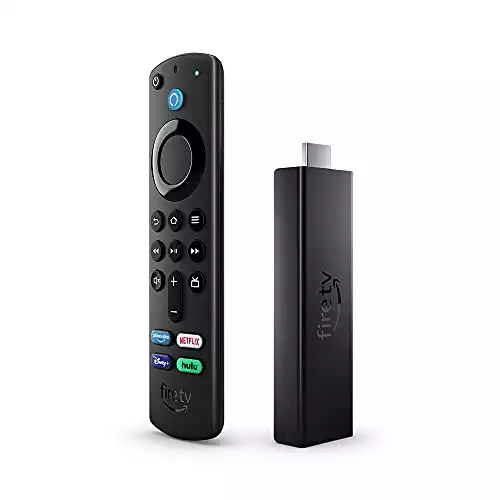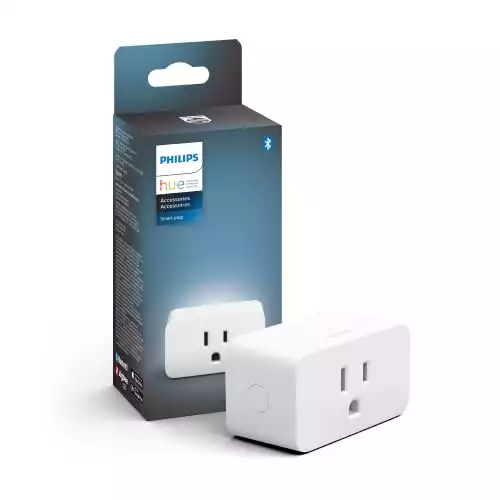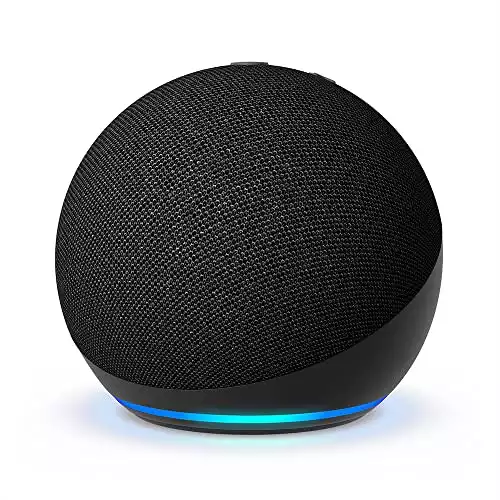This page may contain affiliate links. Please read my disclosure for more info.
A smart home should be an energy-efficient home. Smart appliances usually offer great cost-savings, but you also need ways to cut the costs of your dumb old devices. Smart plugs seem like the obvious solution, but do smart plugs save energy?
Smart plugs draw a small amount of energy in standby mode, but it’s far less than the phantom load of everyday electronics like TVs and laptops. Using smart plugs with schedules, timers, and triggers is a great way to cut hundreds of dollars from your annual energy costs.
In this article, I’ll explain the best ways to save energy with smart plugs. Then, we’ll look at the cost of the plugs themselves to decide whether smart plugs are worth adding to your home (hint: they probably are).
What Is a Smart Plug?
Smart plugs connect between your electronics and the wall outlet, adding smart home functionalities to your dumb appliances. They let you control the device from a smartphone app or even voice commands. Some smart plugs can even integrate your non-smart electronics into Alexa routines.
How to Save Money With Smart Plugs
Schedules, timers, triggers, and energy tracking are the best ways to maximize the usefulness of your smart plugs.
Most of these ideas revolve around preventing vampire draw—the energy that appliances draw when they are sitting idle. Vampire draw (also known as phantom load) costs the average U.S. household up to $100 per year. And if you have a lot of electronics, you could be losing a lot more than that.
1. Setting schedules for appliances
Some appliances don’t need to be running 24/7. If you have an air purifier in your bedroom, maybe you don’t need it to start until an hour or so before you go to bed. And most of your electronics probably go unused during the workday.
Nearly every smart plug app has options to set schedules for your plug. At a minimum, you should be able to set an on and off time for your device. And in most cases, you’ll be able to set multiple on and off times each day, have different settings for each day of the week, and even have devices turn on or off at sunset or sunrise.
2. Turning electronics off on a timer
Many of your appliances only need to be used for a few minutes at a time. This is especially true for small kitchen appliances like tea kettles and toasters, but you’ll find appliances and electronics all over your home that just do quick jobs for you.
You can set your smart plugs to turn off (or on) after a set period of time. This can prevent your 5 minutes of toaster usage from leading to 23 hours and 55 minutes of vampire drain.
3. Trigger electronics only when needed
Schedules and timers are great, but they won’t work for everything. Sometimes, I like to watch TV at 9 PM. Sometimes, it’s at 11 PM. Instead of a schedule, that calls for a trigger.
If you connect your TV to a smart plug, you can keep the plug turned off when the TV isn’t in use. Triggering a smart plug by voice command or the app is just as easy as flipping a switch or pressing a button on your remote. The difference in energy usage is huge though. Preventing phantom load from devices like TVs will save you a lot of money very quickly.
4. Tracking appliance energy usage
You might be surprised which appliances are causing the most damage to your electric bill. You could guess for a while, or you could measure their impact.
Several smart plugs (including the ultra-cheap Kasa Mini) let you monitor energy usage over time. The more of them you set up throughout your home, the better you’ll understand your electrical usage.
Then, you can decide which appliances can be helped by schedules, timers, or triggers. You may also find that some appliances just need to be replaced with more energy-efficient alternatives, but at least you’ll finally know which ones to start with.
Do Smart Plugs Use Electricity When Off?
In standby mode, smart plugs use between 0.3 and 2 Watts of power. Wi-Fi plugs tend to be at the high end of that range (1–2 Watts), and Zigbee and Z-Wave plugs often use less than 0.5 Watts.
That wasted energy is nothing compared to the energy smart plugs can save you. Just don’t expect to eliminate 100 percent of your energy waste—that’ll never happen.
Are Smart Plugs Worth It?
If used correctly, smart plugs are absolutely worth it. You can get a smart plug for as little as $20 or less. If you take advantage of schedules and sleep timers, you can easily make that money back in just a month.
What’s Next?
These are just a few of the many smart plug ideas that I’ve compiled over the years. For instance, you could control your entire entertainment system at once by connecting your power strips to smart plugs (or using a smart power strip).
Smart plugs aren’t the only way to save money while making your home smarter and more convenient. Smart bulbs last longer than classic bulbs and use much less energy, so some Philips Hue or Wiz bulbs are a great addition to your energy-efficient home. They also have some of the same schedule and trigger options as smart plugs and can even be used in the same routines. Pretty cool, right?
|
N/A
|
$34.99
|
$49.99
|

Zachary has spent 12 hears in the tech industry focusing on automation, analytics, and cybersecurity. His passion is tech education; he uses his industry expertise and STEM PhD to break down complicated concepts into simple step-by-step guides. When he’s not writing or coding, you can find him binging anything Star Trek or Marvel or reading far too many sci-fi novels.




